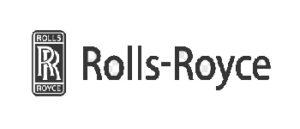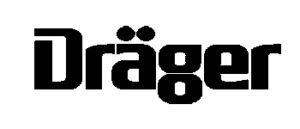How Often Should The Alarms Used With A Fume Cupboard Be Checked And Maintained
Before we begin discussing the topic of fume cupboard alarms and their need to be checked and tested, it's important to begin by examining what a fume cupboard is for those people not familiar with their use.
Holliday Fielding Hocking Ltd are a UK specialist provider of new fume cupboards and used fume hoods. We have been supplying UK laboratories, industry and education for over 70 years, and we can offer a full route for purchasing capital equipment along with providing a full maintenance and testing service including providing access to replacement carbon filters, HEPA filters and parts for UK, European, USA and other worldwide fume cupboards.
What Is a Fume Cupboard
A fume cupboard, also known as a fume hood, is a piece of laboratory equipment designed to protect the user from harmful fumes, gases, and vapours that are generated during experiments or chemical processes.
A fume cupboard consists of a ventilated enclosure with a transparent front sash and an exhaust or filtration system. The fume cupboard sash can be opened or closed to control the airflow and provide a barrier between the user and the hazardous substances.
The exhaust system pulls the contaminated air into the hood and filters it before releasing it safely into the surrounding environment. Fume cupboards are crucial for maintaining a safe and healthy working environment in laboratories.

Regular checks and maintenance of fume cupboard alarms are crucial for ensuring the necessary safety requirements and providing adequate protection for laboratory technicians, students and teachers.
In addition to choosing the right fume cupboards, it is essential to ensure proper ventilation within the laboratory. Sufficient airflow is necessary to replace the air extracted by the fume cupboards, maintaining a safe and comfortable working environment.
By following these guidelines and consulting an expert in fume cupboard maintenance such as Holliday Technical Services, laboratory or educational institution can create a tailored maintenance schedule that promotes a safe and compliant laboratory environment.
Why Checking and Maintaining Fume Cupboard Alarms is Important
Fume cupboards are designed to provide a safe working environment by controlling and monitoring airflow. The alarms used with fume cupboards serve as a critical component in ensuring the proper operation of these systems. They help monitor and alert users to any issues with the airflow, allowing for timely intervention and preventing potential hazards. Regular checks and maintenance of these alarms are essential for the following reasons:
- Safety: By regularly checking and maintaining fume cupboard alarms, you can ensure the safety of laboratory personnel, students and teachers. Malfunctioning alarms may fail to detect hazardous conditions, putting users at risk of exposure to harmful substances.
- Compliance: Regulatory bodies such as Control of Substances Hazardous to Health (COSHH) and specific British Standards are in place to cover standards for ducted fume cupboards and ductless fume cupboards. Adhering to these regulations and standards is crucial for maintaining compliance and avoiding penalties.
- Efficiency: Well-maintained fume cupboard alarms contribute to the overall efficiency of laboratory operations. They help identify potential issues early on, allowing for prompt repairs and minimising downtime.
Now, let's delve into the recommended frequency for checking and maintaining fume cupboard alarms.
Recommended Frequency for Checking and Maintaining Fume Cupboard Alarms
The frequency at which fume cupboard alarms should be checked and maintained can vary depending on factors such as local regulations, the type of laboratory, and the specific requirements of the fume cupboards. However, there are general guidelines that can help laboratories establish an effective maintenance schedule.
- Initial Inspection: During the installation of fume cupboards, the quality and quantity of ventilation should be thoroughly checked. This initial inspection ensures that the fume cupboards meet the necessary safety standards.
- Regular Monitoring: After the initial inspection, it is crucial to monitor the fume cupboards at regular intervals to ensure their continued proper functioning. While the exact frequency may vary, a common recommendation is to check the alarms at least every three months.
- Ventilation Changes: Any changes made to the ventilation system, such as modifications or upgrades, should prompt a reassessment of the fume cupboards and their alarms. This ensures that the alarms remain calibrated and responsive to any alterations in the airflow.
- Regulatory Requirements: Laboratories should also consider the specific regulations and guidelines set forth by their respective governing bodies. For example, in the UK, the Health and Safety Executive (HSE) provides guidance (G201) that outlines that a competent person should perform the 'thorough examination and test' (TExT) at least every 14 months.
It is important to note that these recommendations serve as a general guideline. It is always best to consult with experts in fume cupboard maintenance to develop a tailored maintenance schedule that aligns with your specific laboratory requirements.
Importance of Training and Education
In addition to regular checks and maintenance, proper training and education are vital for ensuring the safe and effective use of fume cupboards. Both teachers and students should receive comprehensive training on the correct use of fume cupboards and the associated alarms. This includes understanding the purpose of fume cupboards, the importance of monitoring airflow, and the correct response to alarm notifications.
Training should cover topics such as:
- Proper operation of fume cupboards
- Recognising alarm notifications
- Responding to alarm situations
- Reporting any issues or malfunctions
By providing thorough training, laboratories can minimise the risk of accidents and create a safe environment for all users.

Choosing the Right Fume Cupboards for School Laboratories
School laboratories often rely on fume cupboards for various educational purposes. When selecting fume cupboards for school laboratories, it is crucial to choose models that adhere to accepted UK standards. These standards ensure that the fume cupboards meet the necessary safety requirements and provide adequate protection for students and teachers.
In addition to choosing the right fume cupboards, it is essential to ensure proper ventilation within the laboratory. Sufficient airflow is necessary to replace the air extracted by the fume cupboards, maintaining a safe and comfortable working environment.
Compliance with COSHH Regulations
The Control of Substances Hazardous to Health (COSHH) regulations provide further guidance on the maintenance of fume cupboards and their associated alarms. According to COSHH, fume cupboards and their airflow monitoring systems should be checked and tested at least every 14 months. This periodic maintenance ensures that the fume cupboards are functioning correctly and identifies any necessary repairs.
At Holliday Fielding Hocking Ltd, a specialist service provider for fume cupboards, we recommend an annual inspection cycle with more frequent checks every six months for Category 3 Level Laboratories and 12 months for all other laboratories, industry and education.
Our highly trained service engineers cover the entire UK, providing scheduled and ad-hoc services to ensure the safety and compliance of fume cupboards.
Conclusion
Regular checks and maintenance of fume cupboard alarms are essential for maintaining a safe and compliant laboratory environment. By adhering to recommended guidelines and regulations, laboratories can ensure the proper functioning of fume cupboards, minimise risks, and promote the well-being of laboratory personnel.
Remember to consult with experts in fume cupboard maintenance such as Holliday Fielding Hocking and our sister company Holliday Technical Services to develop a tailored maintenance schedule that suits your specific laboratory requirements.
If you would like to learn more about fume cupboard servicing or discuss your laboratory's specific needs, please contact our support team at +44 (0) 113 245 4111.
Useful Links
Holliday Fielding Hocking Ltd > Our Products
Holliday Technical Services > Fume Cupboard Testing
Wikipedia > Fume Cupboards




